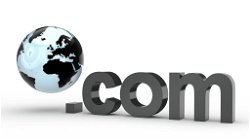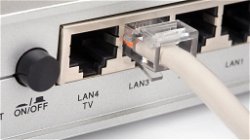Simple Tips to Help Optimize your E-Commerce Site
Adina Anderson
. 2 min read
As consumers continue to avoid making in-store purchases, the eCommerce market will see additional growth in the coming years. In the long run, eCommerce is predicted to grow by 11% between 2019 and 2024. But now that more consumers are turning to eCommerce, competition on the business side is stiff. You've got to stand out from the crowd and capture a visitor's attention within seconds of them coming to your website. This is where the homepage comes in, and programming plays a crucial role in creating an engaging and user-friendly interface. By utilizing programming languages like HTML, CSS, and JavaScript, businesses can design visually appealing and responsive homepages that not only grab attention but also provide a seamless browsing experience.

How to Calculate Your Conversion Rate?
Before you start working on ecommerce site optimization, it’s important to get the basics right. You’d be surprised at how many store owners don’t know much about optimizing their store owners. A key part of improving your store’s performance relates to conversion rate optimization. But, before you do that, it’s important to understand what the conversion rate is, and more importantly.
Tips for eCommerce Optimization
- Create Urgency With Flash Sales
- Overcome Other Specific Objections
- Reduce Cart Abandonment
- Build an Email List
- Split Test Your Email Optins and Campaigns
- Automate Your Email Marketing
How to Calculate Your Conversion Rate?
Before you start working on ecommerce site optimization, it’s important to get the basics right. You’d be surprised at how many store owners don’t know much about optimizing their store owners. A key part of improving your store’s performance relates to conversion rate optimization. But, before you do that, it’s important to understand what the conversion rate is, and more importantly.
How to Optimize an ecommerce Website?
People aren’t going to buy your products if they can’t find them on your website. Usability is equally important for conversions and SEO. That’s why you should make it a goal to have an organized hierarchy of pages in your ecommerce store. Create general categories, and narrow them down to specific sections of products.
Here are Some Considerations:
1. Simple is always The more things you have going on, the harder it will be to guide your customers towards your intended call-to-action (CTA).
2. Include a search bar with relevant filters. You could take this to the next level and offer search results personalized to the individual customer.
3. Have one clear CTA on every page, especially your homepage.
4. If your product/service catalogue is extensive or you cater to a very broad range of customers.
Analyze site performance to determine effective strategies
Your ability to identify and comprehend e-commerce optimizations is directly tied to your reporting and analysis tools. Traffic reports, campaign performance, conversion and sales attribution all of these reporting tools are your eyes and ears. It’s critical that you lay an optimal foundation for future reporting. Get Google Analytics set up and take the time to understand exactly what it’s telling you.
Beat the Competitors
The competition among e-commerce stores has become fierce. Everyone tries to beat out the rest in the race of sales and conversions. Time waits for no businessperson. If you wish to stay in the game, then you need to watch out what your competitors are doing to win the hearts of customers. You can take advantage of several sales events taking place throughout the year.
How to Increase Ecommerce Conversion Rate – Content Optimization
Rookies at face-to-face sales are notorious for “talking themselves out of the sale.” There comes a point where you simply need to shut up and offer the prospect a pen to confirm the order. Failures to complete the process at checkout are often due to gaps in the content that supports the sale. We often find the problem isn’t that the content doesn’t exist, but that it isn’t made available in the right format .
More Stories from
Essential Tips for Optimizing Your eCommerce Store for Voice Search
Optimizing eCommerce for Voice Search.
Fortifying Digital Assets: Ensuring Robust IP Security in a Connected World
It highlights the value of safeguarding intellectual property from external and internal threats, emphasizing the preservation of innovation and competitive advantage.
Decoding the DNS: Enabling Seamless Internet Connectivity
The Domain Name Service (DNS) is a vital system that translates user-friendly domain names into machine-readable IP addresses, enabling seamless internet connectivity.
LAN Event Generator: Powering the Next Generation of Local Area Network Gatherings
Discover the game-changing impact of the LAN Event Generator, a sophisticated software application designed to streamline the organization of LAN events.









.png?width=40&aspect_ratio=1:1)


.png?width=40&aspect_ratio=1:1)